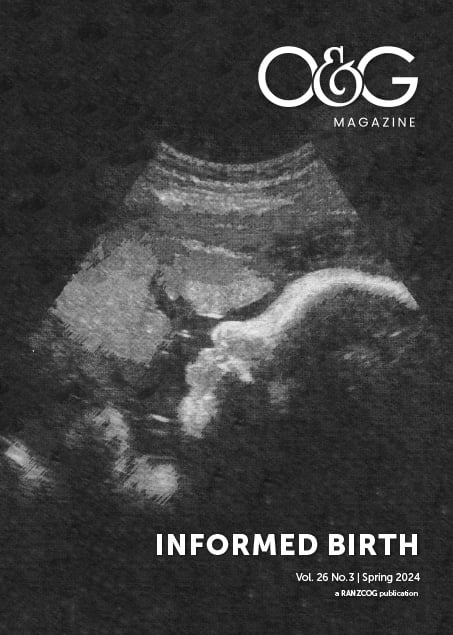At the Australasian Birth Trauma Association (ABTA), we recognise that childbirth is a monumental event in parents’ lives. However, when trauma occurs, its impact can extend far beyond the early stages of parenthood. We can ensure clinicians understand the importance of informed birthing and parents are well-informed about the birthing process, both being crucial steps for promoting positive birth outcomes and minimising birth-related trauma.
In June 2024, ABTA conducted a survey of the general population, which received 1,005 responses. Nearly all participants identified as female (99.9% female, 0.1% non-binary), were between 18 and 45-years old and had given birth in the past five years. The respondents were evenly distributed across all Australian states and territories, including both metropolitan and regional areas. Our survey found that one in three (36%) birthing parents in Australia agreed to birth interventions without fully understanding the risks involved.
This lack of information often means parents are unable to make fully informed decisions about their childbirth options. Informed consent, or the lack thereof, is a significant contributing factor to birth-related trauma. Feeling informed goes beyond having access to information; it involves feeling heard, listened to, and empowered to ask all the necessary questions to make informed decisions.
Bridging the information gap
Our experience working with parents over the past eight years has shown that women and their families want to be as informed as possible before giving birth, understanding all the options and risks. Despite this clear demand, there is a significant gap in the information provided to parents about potential complications and outcomes. Our survey showed only 34% of healthcare professionals discussed pelvic organ prolapse or nerve damage with parents before birth. Similarly, only 43% addressed concerns like urinary, faecal, or wind incontinence and severe tears (third or fourth degree). This lack of comprehensive information can leave parents unprepared for the realities of childbirth and its potential consequences. Additionally, without clear postnatal care pathways, this leaves parents to shoulder the burden of finding the right care for their needs, often resulting in thousands of dollars of out-of-pocket expenses.
The impact of birth-related trauma
ABTA’s 2022 research report ‘Birth Injuries: A Hidden Epidemic’ highlighted the devastating effects that birth-related conditions can have on parents’ lives. Pelvic organ prolapse, incontinence, and severe tears can lead to significant physical and emotional distress. Without access to evidence-based education and true informed consent, parents may find themselves overwhelmed and unsupported when faced with these challenges, bearing the toll of seeking specific support for their unique needs.
The role of clinicians
Healthcare professionals play a crucial role in closing the information gap about the potential consequences of childbirth. When exploring birth options, our survey participants ranked their key sources of information about birthing topics. The top five sources included friends and family, obstetricians, Google, GPs, and hospital birthing classes.
Despite the availability of various information sources, only half of the parents participated in antenatal education or birthing classes before giving birth. Among those who did not attend these classes, 17% conducted their own research, and 15% indicated that their hospital or care provider did not offer any classes. This highlights a significant reliance on unsubstantiated sources for vital birthing information.
As one survey respondent noted, “In my birth class, they didn’t talk about forceps as they said they didn’t really use them anymore and said the resuscitation bay was just where they kept their notes. My baby needed forceps and resuscitation. With one in three births being considered traumatic, we really need to let go of the idea of worrying women about labour. Women deserve to have knowledge, and maybe that would reduce the trauma experienced by so many.”
The majority of our survey respondents supported expanding the breadth and depth of, and access to, evidence-based antenatal birthing education. This includes multidisciplinary input (doctors, pelvic physiotherapists, lactation consultants) and the implementation of written informed consent in the third trimester in collaboration with midwifery or obstetric staff. This is a critical consideration when so many women rely on Google for their information.
Supporting informed birth: How clinicians can help
By providing balanced, evidence-based, and reliable information, clinicians can empower parents to make informed decisions about their childbirth options and go a long way toward addressing preventable birth-related trauma. Here are some ways clinicians can support informed birth:
- Provide comprehensive information: Discuss the benefits and potential risks of different birth options and procedures before the birth. Ensure parents understand the full spectrum of possibilities.
- Enhance understanding: Offer easy-to-read materials and translation services as needed. Utilise resources from the Australasian Birth Trauma Association to facilitate understanding.
- Encourage questions: Create a supportive environment where parents feel comfortable asking questions. Avoid medical jargon and appreciate decision-making is a continuous process.
- Respect parental choices: Act on the decisions made by parents and respect their wishes. Always seek consent before providing care, remember that consent is a process and make referrals to specialists when necessary.
As one parent shared: “I think it would be good to know a little about the potential complications but include absolute risk so people can understand how unlikely they are. What I really think is missing from birth education, in general, is consent, complications that interventions can bring about, and what to expect in/after an emergency caesarean. My first birth class focused on natural birth, but due to the cascade of interventions, I ended up with a caesarean, and I was surprised to learn I would still bleed from my vagina afterwards. Sounds basic to me now, but I had no idea the bleeding was from where the placenta detaches.”
Creating a positive childbirth experience for all
Informed birth education is essential for both clinicians and parents. Working together to ensure comprehensive, balanced, and accessible information, we can create a more positive and empowering childbirth experience for all. It is vital that the preferences of the mother, whether she desires an elective caesarean or a home birth, are supported and respected. There is no risk-free birth route, and discussing and respecting an individual’s personal risk profile and preferences is so important. Providing information and education without withholding details out of concern for causing fear is essential. Empowering women through the provision of information is crucial in shaping their experience of pregnancy, childbirth, and beyond.
At the Australasian Birth Trauma Association, we are deeply committed to supporting healthcare professionals in their work. To learn more about our training and resources, including our new ThinkNatal educational resources and CPD training modules, visit the Birth Related Trauma Resource Hub.
References
- Australasian Birth Trauma Association (2022). Birth Injuries: A Hidden Epidemic – Research Report





Leave a Reply